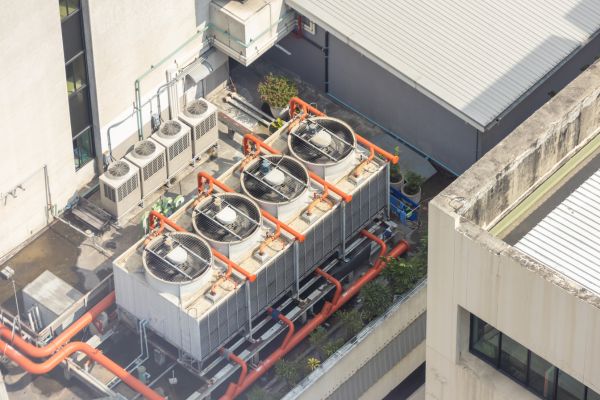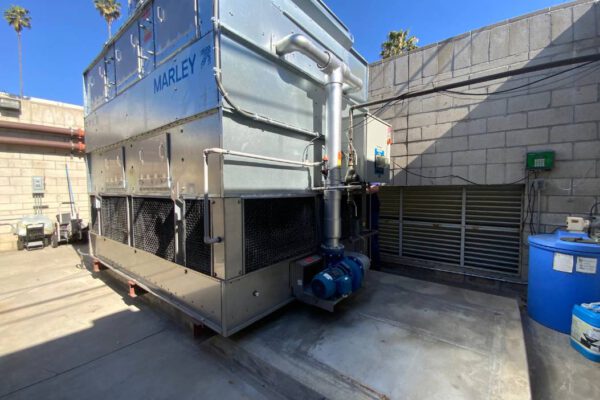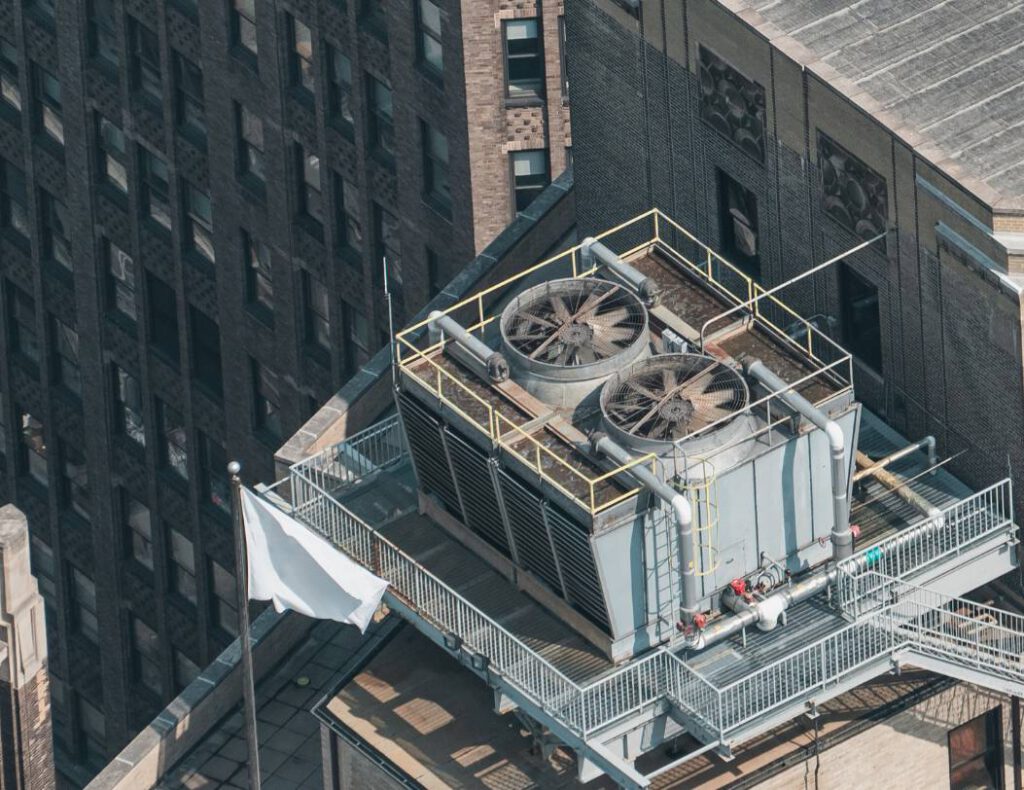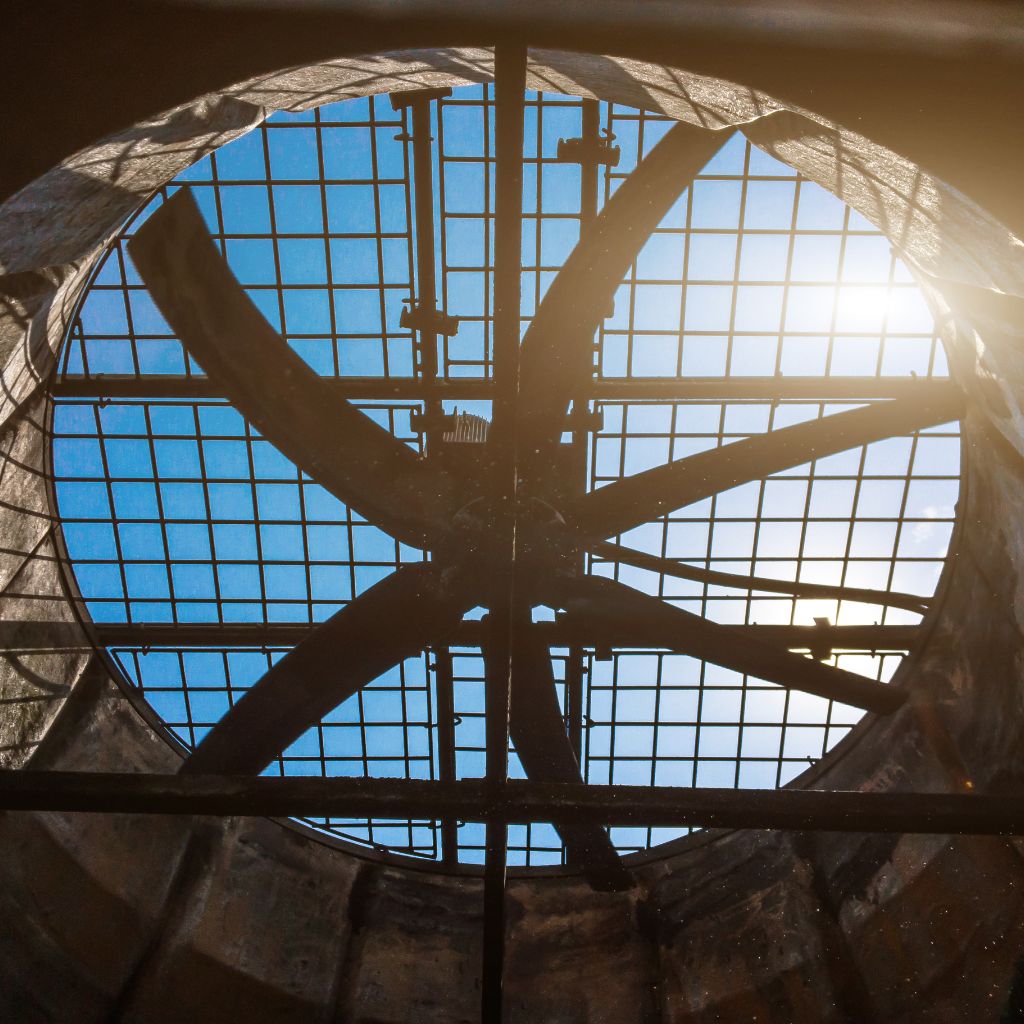Legionella in Cooling Towers: Prevention, Risk Management, and Water Treatment Solutions
What’s the Risk of Legionella in Cooling Towers?
Cooling towers are essential to the operation of many industrial and commercial facilities, but they also present a notable risk: the potential for Legionella bacteria growth. If left unmanaged, Legionella can multiply in cooling tower water and become airborne in water droplets, leading to serious health concerns, including Legionnaires’ Disease outbreaks. Proactive Legionella control in cooling towers is critical to protect building occupants, maintain regulatory compliance, and avoid costly interruptions.

Industries at Risk for Legionella in Cooling Towers
- Healthcare facilities (hospitals, clinics, and long-term care): Extremely critical to monitor these facilities with their vulnerable populations and regulatory scrutiny.
- Hotels/hospitality: Guest safety and past outbreaks can be a concern.
- Industrial facilities (manufacturing, food processing): Due to large-scale water use and complex systems, Legionella can go undetected.
- Commercial buildings (offices, malls): Any buildings with increased occupant density can be vulnerable to a Legionnaires’ Disease outbreak.
- Educational institutions (universities, schools): Large, aged infrastructure can increase the risk of Legionella growth.
- Data centers: Continuous cooling, strict uptime requirements for servers, etc., may be a risk factor.
- Recreational centers (gyms, sports facilities): Precautions are critical with potential public exposure through air/water aerosols.
Why Does Legionella Develop in Cooling Towers?
Several key factors drive Legionella issues in industrial and manufacturing facilities, and managing these risks is essential.
1. Biofilms: Slimy layers of microorganisms, called biofilms, protect Legionella and help it multiply. Regular cleaning and using specialty treatments to target biofilms are key Legionella prevention steps.
2. Cooling Tower Design & Materials: Poorly designed towers with stagnant areas or corroded metals boost bacteria risk. It’s worth considering engineered plastics and designs that enable easy cleaning, recirculation, and maintenance to limit Legionella growth.
3. Water Treatment: Even with chemical treatment, Legionella can persist if water temperature, flow, or outside contamination aren’t managed. Also, if your cooling tower is idle for several days be sure to fully drain the entire system.
4. Source Water Quality: Water from wells, tanks, or lakes may introduce microorganisms, rust, and debris. Clean, filtered makeup water is vital for safe industrial cooling systems.
5. Warm Weather: Legionella thrives in water temperatures between 68°F and 113°F (20°C and 45°C). Hot weather can raise water temperatures, boosting Legionella growth. Monitor and insulate pipes and tanks to keep water cool, especially in summer.
By addressing these areas with proper design, treatment, monitoring, and maintenance, facilities can significantly reduce the risk of Legionella outbreaks.

Comprehensive Cooling Tower Cleaning & Legionella Risk Prevention
Regular cleaning and disinfection are essential to minimize Legionella bacteria growth in cooling towers and to protect against Legionnaires’ Disease. Industry best practices—and many regulations—recommend that cooling towers be thoroughly cleaned and disinfected at least twice per year.
Our certified Legionella water treatment specialists provide expert cooling tower cleaning, disinfection, and Legionella prevention services nationwide. We ensure your cooling tower is free from dangerous biofilms and scale buildup, meets or exceeds all local, state, and national standards, and supports a safe and healthy environment for your facility.


Maintenance & Risk Control Practices for Legionella in Cooling Towers
IWC Innovations can help you maintain and prevent Legionella development in your cooling towers. Our services include:
- Routine Cleaning and Disinfection: We recommend cleaning and disinfecting cooling towers at least twice annually to prevent Legionella buildup.
- Comprehensive Testing and Water Quality Monitoring: We help our customers regularly test water for Legionella and monitor key quality parameters to ensure compliance and safety as part of a water management plan.
- Temperature Control Strategies: We’ll help you maintain water temperatures below 20–45°C to limit Legionella growth.
- Water Treatment Methods: We use proven disinfectants and alternative treatments, verifying effectiveness through routine checks.
- System Upgrades and Smart Technologies: We also offer automated dosing, advanced filtration, and real-time monitoring to optimize system safety and efficiency.
Regulation & Compliance for Cooling Towers
Across the United States, regulations for cooling towers have become increasingly strict to prevent Legionella outbreaks. Many states and municipalities have introduced laws requiring building owners to register their cooling towers, conduct regular inspections, cleaning, disinfection, and testing. For example, New York’s Local Law 77 of 2015 mandates annual certification of compliance alongside routine maintenance procedures, and similar frameworks are in place or developing in other regions.
State and local health departments broadly require building owners to establish and follow detailed maintenance and Legionella risk management plans tailored to their cooling tower systems. Compliance typically involves documentation, record-keeping, and sometimes reporting to local authorities. Staying current with evolving regulations—both state-specific and municipal—is essential as rules continue to be updated.
Owners and managers of facilities with cooling towers should regularly consult their state and local public health agencies and industry guidelines to ensure they meet all requirements and best practices for Legionella control nationwide.

FAQs on Legionella & Cooling Towers
A: There is no universally “acceptable” level of Legionella in cooling towers. Many guidelines state that Legionella bacteria should not be detectable in water samples, but action levels vary. Most experts agree that the goal should be non-detectable levels, and any presence should prompt investigation and remediation.
A: The recommended testing frequency can vary by region and facility risk profile. However, we recommend cooling towers should be tested for Legionella at least twice per year. Some facilities, particularly those serving vulnerable populations such as hospitals, may require more frequent testing. Local regulations may also dictate specific requirements.
A: Here are a few ways to employ water treatment:
- Biocidal treatments: Chlorine, bromine, monochloramine, and other EPA-approved biocides are effective when dosed correctly.
- Physical control: Filtration and UV disinfection can reduce the presence of Legionella bacteria.
- System optimization: Removing dead legs (sections of piping within the water system that experience little to no water flow), minimize stagnation, and keep surfaces clean.
- Integrated water management: Combining chemical, physical, and procedural controls tailored to the system.
A: In the United States, regulatory requirements for cooling tower maintenance and Legionella control vary by state and locality. For instance, New York requires public registration, detailed maintenance logs, regular Legionella testing, and immediate reporting of positive results. Check your state’s department of health or environmental agency for specific regulations. Follow national guidelines like ASHRAE Standard 188 for best practices.
If Legionella is detected, make sure to notify appropriate public health authorities if required by law and contact us immediately. We can help you with our expert Legionella remediation and treatment.

